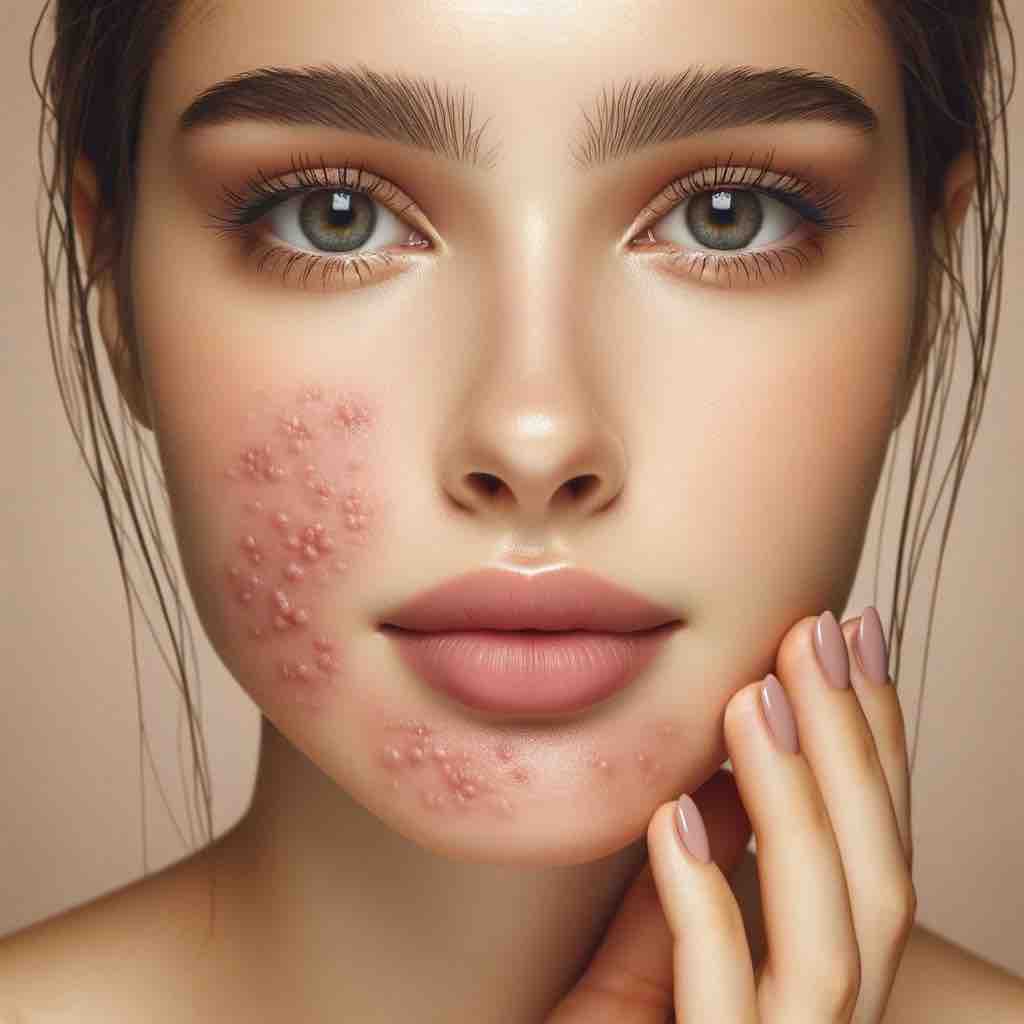
1. Introduction
Perioral dermatitis is a common skin condition characterized by a pimple-like rash around the mouth and on the face. It often presents as red, bumpy inflammation, causing discomfort and aesthetic concerns. Understanding this condition is the first step towards effective management and treatment.
2. Identifying Perioral Dermatitis
Perioral dermatitis typically manifests as small, red bumps around the mouth, nose, and sometimes the eyes. The affected areas may also appear scaly and flaky. Differentiating perioral dermatitis from other skin conditions such as acne or eczema is crucial for appropriate treatment. For a broader understanding of dermatitis and related conditions, you might find this article on Eczema and Dermatitis: Causes and Coping Mechanisms helpful.
3. Causes and Contributing Factors
Various factors can contribute to the development of perioral dermatitis. Common culprits include the use of topical steroids, certain kinds of toothpaste, and facial creams. Environmental factors, such as weather and pollution, as well as hormonal fluctuations, may also play a role. Understanding the triggers and causes is essential, and further insights can be gained from this article discussing Eczema and Dermatitis Causes.
4. Treatment Options
Prescription Treatments
Doctors may prescribe antibiotics or topical applications to manage the symptoms of perioral dermatitis. Tailoring the treatment to the individual’s needs and skin type is essential for effectiveness.
Over-the-Counter Solutions
Certain over-the-counter creams and ointments may be beneficial. Choosing products that are suitable for sensitive skin and free from irritants is crucial. For a variety of treatment insights, consider exploring Exploring Eucrisa: An Eczema Solution.
Natural and Home Remedies
Natural remedies, such as herbal applications and light therapy, may offer relief. For example, red light therapy has been explored as a potential treatment method. For more on natural remedies, this article on Oatmeal Baths: Remedy for Eczema and Dermatitis could be informative.
5. Skincare and Preventative Strategies
Maintaining a skincare routine that minimizes irritation is essential for managing perioral dermatitis.
- Choosing the Right Skincare Products: Opt for non-comedogenic, fragrance-free products designed for sensitive skin.
- Cleansing: Gentle cleansing is crucial. Avoid harsh scrubs or irritating ingredients.
- Moisturizing: Keep the skin hydrated with suitable moisturizers that don’t exacerbate the condition.
For more detailed skincare strategies, consider reading Soothing the Itch: Guide to Eczema Relief.
6. Special Considerations
- Sensitive and Dark Skin: Tailoring treatments to suit different skin types is essential. Special care should be taken with sensitive and darker skin tones to prevent hyperpigmentation or scarring.
- Pediatric Perioral Dermatitis: Managing this condition in children requires a gentle approach, considering their delicate skin.
7. Expert Opinions and Resources
Seeking professional advice from dermatologists or skincare experts is always recommended for personalized guidance. Online consultations and resources are also available for convenience and accessibility.
8. Frequently Asked Questions (FAQs)
- What are the common triggers of perioral dermatitis? Triggers of perioral dermatitis often include topical steroids, certain toothpastes, and facial creams. Environmental factors such as weather changes and hormonal fluctuations can also contribute to the condition.
- How is perioral dermatitis different from acne or other forms of dermatitis? Perioral dermatitis typically presents as small, red, pimple-like bumps around the mouth and face, distinguishing it from acne and other dermatitis forms which might occur in different areas and with varying appearances.
- Can over-the-counter products help in managing perioral dermatitis? Some over-the-counter products, especially those designed for sensitive skin, can be helpful. However, it’s essential to choose products that are free from irritants and harsh chemicals.
- What role do antibiotics play in treating perioral dermatitis? Antibiotics, both topical and oral, can be part of a treatment plan, helping to manage inflammation and bacterial involvement in perioral dermatitis.
- Are there natural remedies effective against perioral dermatitis? Natural remedies, such as herbal applications and certain dietary adjustments, might offer relief, but their effectiveness can vary based on the individual and the severity of the condition.
- How can skincare routines be adjusted to manage perioral dermatitis? Skincare routines should be gentle, with a focus on minimizing irritation. Opt for mild cleansers, and ensure the skin is adequately moisturized.
- Is perioral dermatitis a long-term condition? The duration of perioral dermatitis can vary. With appropriate treatment and skincare management, the condition can improve over time.
- Can makeup be worn when having a perioral dermatitis flare-up? If makeup is to be worn, it should be non-comedogenic and suitable for sensitive skin to avoid worsening the condition.
- What dietary considerations should be made when managing perioral dermatitis? A diet low in processed foods and rich in anti-inflammatory ingredients may be beneficial, but individual responses to dietary changes can vary.
- How often should someone with perioral dermatitis consult a dermatologist? Regular consultations with a dermatologist are advisable for ongoing management and to make necessary adjustments to the treatment plan based on the condition’s progress.
9. Conclusion
Perioral dermatitis is a nuanced skin condition that requires a thoughtful and personalized approach to management and treatment. The key takeaways from this discussion include identifying the unique characteristics of perioral dermatitis, understanding the potential triggers and causes, and exploring a variety of treatment options ranging from prescription medications to natural remedies. Tailoring skincare routines to minimize irritation and suit individual needs is also a crucial aspect of managing this condition effectively.
We encourage readers to delve deeper into the subject by exploring the linked articles, which offer a wealth of knowledge and diverse perspectives on managing dermatitis and related skin conditions. Remember, professional consultation is invaluable for receiving personalized advice and treatment strategies that are most suited to your skin’s needs and the specific characteristics of your perioral dermatitis.
10. Related Articles and Resources
- Eczema and Dermatitis: Causes and Coping Mechanisms
- Oatmeal Baths: Remedy for Eczema and Dermatitis
- Exploring Eucrisa: An Eczema Solution
These articles offer additional insights into managing dermatitis and related skin conditions, providing a well-rounded perspective and a wealth of information for readers seeking guidance.
Blog Tags
perioral dermatitis, skincare, natural remedies, dermatitis treatment, sensitive skin, facial dermatitis, dermatology, skin inflammation, oral antibiotics, topical treatments










